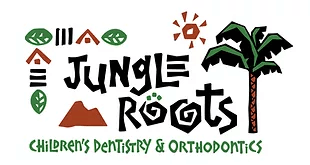You may think that it is only necessary to see an orthodontist while you have braces, but there are many other situations that would lead to an orthodontic appointment. Early screenings, developmental checks, and follow up visits after orthodontic treatment are a few examples of important visits. In this article, we will discuss the most common reasons our orthodontic team sees a patient who isn’t wearing braces.

It’s important for children to have an orthodontic screening at around age 7 for several reasons. Around the time a child turns age 7, adult teeth have started showing up, baby teeth have been falling out, and their jaw is still growing. Orthodontists utilize this time to either set up monitoring, or begin working on potentially problematic issues while a child is still in their early stages of development. This way, issues are often minimized or the need for future treatment is eliminated altogether.
Around this age, children usually have the ideal arrangement and number of teeth for an orthodontist to correctly diagnose any issues needing correction. Any early intervention conducted at this time can be very helpful for both the patient and their parents. Aside from the aforementioned simplification of the problem or elimination of the need for future treatment, it can also make it much more cost-efficient for the parents when treatment is deemed necessary.
Orthodontists find a myriad of issues that have the potential to cause future problems, as well as some that may not need any treatment at all. For starters, children with malocclusions (aka “bad bites,” described below), spacing issues, or poor dental habits like thumb-sucking usually benefit from an early diagnosis and full evaluation at this age. Let’s look into some of the issues that orthodontists run into when examining this age group.
Malocclusions are problems that generally have to do with the shape and size of the jaw or teeth. Some examples of malocclusions include:
According to the American Association of Orthodontists, other issues which may require early intervention include:
If you become aware of any of the above malocclusions, spacing issues, bad dental habits like thumb-sucking, or any of the additional issues in your child, check with us for further review. Our dental and orthodontic team will work with you to make any final treatment decisions.
Although the patient’s teeth may appear to be perfectly aligned, orthodontists can see things others miss. Sometimes they may see things that could develop into a problem but simply haven’t yet, or a check-up may show that things are actually just fine. In cases where the patient would benefit from early intervention, the orthodontist may be able to treat the issue successfully (straightening crossed or crooked teeth, correct malocclusions, or eliminate the need for future extractions). Simplified treatment like this may not be possible once the face and jaws complete full growth.
If the orthodontist feels the issue is better monitored over time, we would establish when to re-evaluate, when or if your child needs x-rays, and determine a more appropriate time to move forward with treatment.
Beyond the 7-year-old evaluation and possible treatment/s, there are other check-ups and observational visits conducted at various times, particularly after a patient has had braces. These visits typically take place depending upon the orthodontist’s preference. The retention period (time spent wearing a retainer to hold the teeth in place after braces are removed) and the length of time for retention varies by doctor, as well.
After the initial phases of early treatment, here at Jungle Roots, we continue to monitor the growth and development every 6 to 9 months until our patient is ready to start the second comprehensive phase of orthodontic treatment.
For our older children, teen, and adult patients, if a comprehensive treatment like braces has been completed, we’ll arrange to see the patient 2 or 3 times for observational visits during the first year.
Going forward, we then agree to see the patient as needed. This may include appointments if they need their retainer replaced, or if there are problems with the retainers, etc. It is important to remember that if you really want your teeth to remain aligned for a lifetime, you’ll need to continue to wear your retainer on a regular basis for a lifetime. So, if your retainer has a problem or needs to be replaced, please be sure to contact us right away. Even in the space of a few months without a retainer, your teeth can begin to move out of alignment!
Through early intervention, orthodontists can guide your child’s teeth into a better position, move them into a more attractive arrangement, correct and eliminate problematic oral habits, and more. It’s important that children visit their orthodontist at the age of 7 in order to evaluate what’s happening with their teeth and see if it warrants early intervention or if it’s better to wait.
Once you’ve had braces or orthodontic care, it is equally important to complete your follow up care. We want to make sure that all your hard work creating an ideal mouth is maintained for your lifetime, and it is crucial to monitor your mouth for a while after treatment is finished.
If you find issues like the ones mentioned in this article, please don’t hesitate to give us a call, even if your child is a ways off from age 7 -- we’re always happy to help out and advise whenever we can. It’s always better to be safe and enjoy a healthy smile for years to come!

At Jungle Roots Children’s Dentistry & Orthodontics, we strive to provide the highest comprehensive pediatric and orthodontic dental care in a unique, fun-filled environment staffed by a team of caring, energetic professionals. We believe the establishment of a “dental home” at an early age is the key to a lifetime of positive visits to the dentist.
#ahwatukee#Arizona#chandler#dental#dentalcare#dentist#dentistry#health#JungleRoots#mom#OralHealth#ortho#orthodontics#PediatricDentistry#phoenix#wellness
